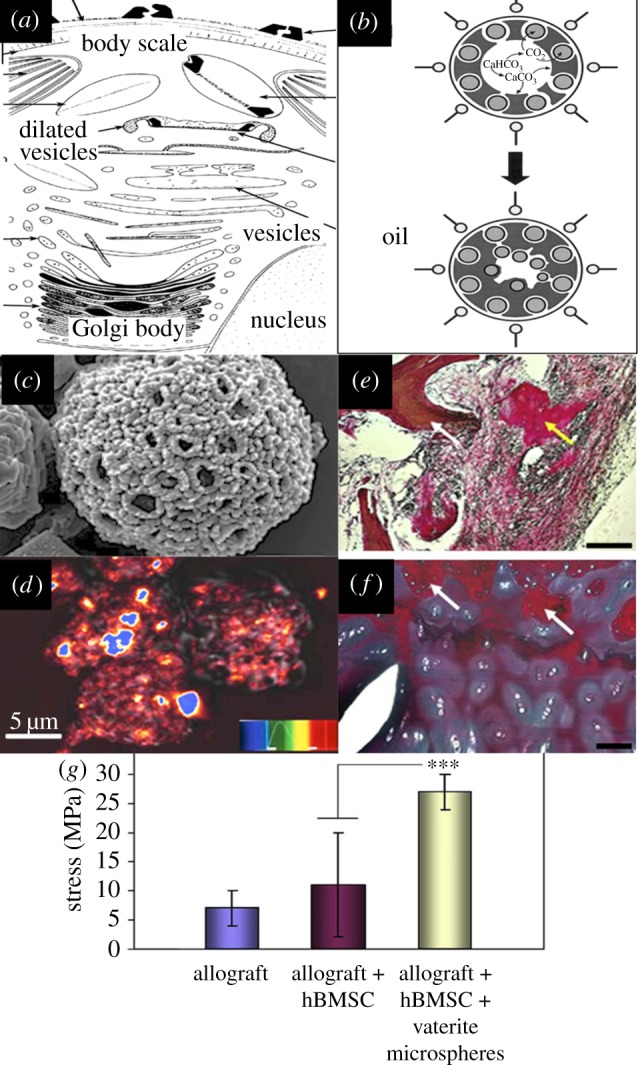Figure 5.

(a) Diagram illustrating biological formation of coccolithophore skeletal sections by cell organelles [29] (adapted from Mineralogical Society, America & Highwire). (b) A simple chemical system devised by Walsh et al. that emulates biomineral patterning in calcium carbonate reminiscent of the cuboid building blocks in coccolithophore species [37] (adapted from Wiley). The re-action field conditions were modified during evaporation of the oil phase during the last step of vaterite microsponge synthesis. (c) An SEM image showing an intricate biomimetic crystal architecture generated using this adaptable chemical system (DW Green 2008, unpublished data). It is also possible to add biological functions to the structures by doping the water phase with any desired protein additive which will lead to its entrapment between crystals and inside them [9]. (d) A laser confocal image of detected haemoglobin, highlighted in orange and red entrapped into vaterite microsponges (adapted from Royal Society of Chemistry) [9]. (e,f) Vaterite microspheres generated via biomimetic materials chemistry have shown to promote extensive immature bone formation in an animal model within composites of bone allograft and hBMSC. (e) Human bone allograft co-cultured with hBMSC in vivo gave rise to small segments of collagen type I positive bone tissue. When human allograft and hBMSC were co-cultured with vaterite microspheres, there was new bone tissue production almost throughout the implanted material (f). (g) The microsphere-laden tissue gave significantly enhanced compressive strength compared with the diffuse tissue generated without microspheres (Adapted from Elsevier) [75]. (Online version in colour.)
